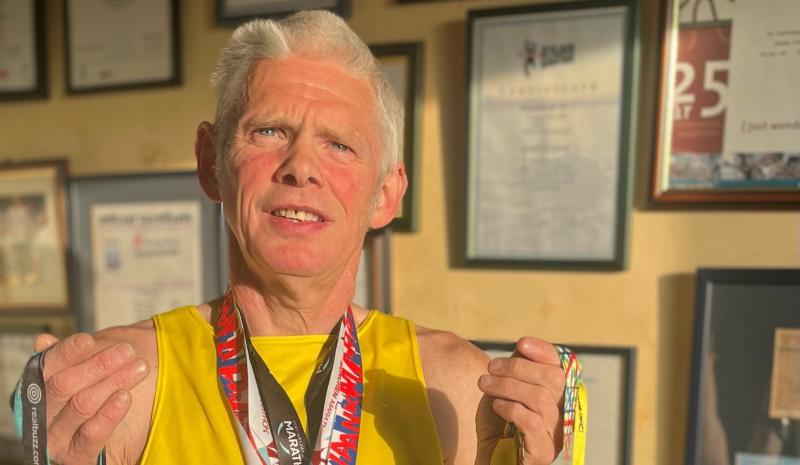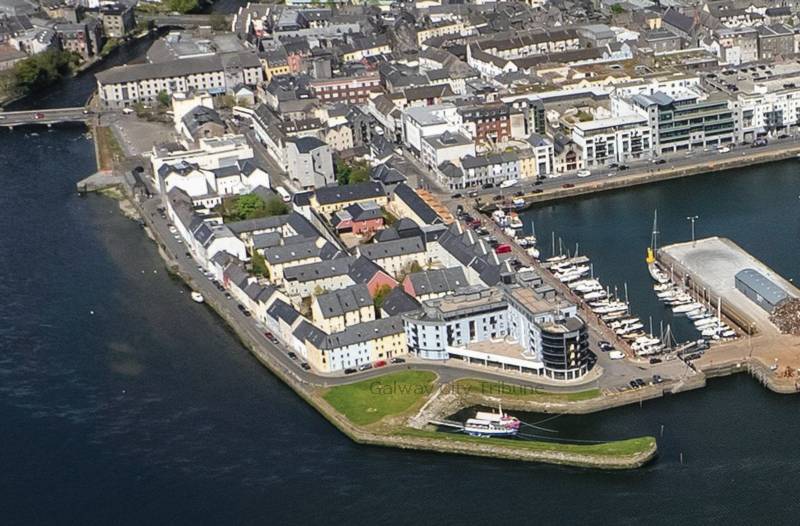News
West needs investment to realise tourism potential

A new report by the Irish Tourist Industry Confederation has urged the Government to direct over half of their tourist investment to the west, with at least €125m needed over the next four years to transform it into “the quintessential Ireland destination”.
The influential representative body of the tourist industry believes that as well as redressing the west’s infrastructural deficits in communications, transport and utilities – created through chronic underinvestment – the State must deliver at least one flagship additional attraction by 2020.
The major report, titled ‘Tourism In The West – An Engine For Growth And Jobs’, has described the potential to grow tourism in the west as significant now that demand for holidays in Ireland has returned to growth – but only if the right policies and actions are pursued.
“Not only have visitor numbers and expenditure to the west been growing in recent years, but the area has been regaining share of the demand for holidays in Ireland. The diverse landscape, heritage, cultural and outdoor experiences, coupled with its people and tradition of hospitality, uniquely positions the west as the quintessential Ireland destination.”
A focused strategy to bring more visitors to the western seaboard, encouraging them to spend more and stay longer, could see the region capture at least 55% of the total tourist spend by 2020. This can be achieved through three pillars for growth: investment, branding and leadership, insists the industry body.
The ITIC wants investment on authentic ‘real Ireland’ experiences: heritage and culture; outdoor activities and exploration; maritime tourism; food and drink; The Gaeltacht; and festivals and events.
They also call for a particular focus on the development of extended walking and cycling ways, including the creation of a long distance Pilgrim Way.
A previous report in 2011 by the confederation included a recommendation to create an ‘Atlantic Coast Drive’, which Fáilte Ireland and the local authorities developed into the Wild Atlantic Way.
Now that the Wild Atlantic Way has been such a success, the focus should turn to the branding of a wider area around the route as Ireland’s top compelling ‘must visit’ year round destination.
One of the key challenges to increasing overseas visitor numbers is to improve air access as tourists who arrive at airports outside the capital spend more bed nights across the region.
The report found that the share of capacity into the West has been slipping as airlines increasingly concentrate services on Dublin. There have also been several instances in recent years of new routes into the west leading to a discontinuation of other existing routes.
“As the evidence points to the greater value of tourists arriving directly into the west, the development of sustainable summer routes from the principal source markets in mainland Europe – Germany, France, Italy, Spain and Scandinavia – and securing an increase in transatlantic services into Shannon present a particular challenge for the tourism sector in the west.”
An industry-led alliance to improve collaboration and the coordination of tourism development along the Western Seaboard was crucial to capturing a growing market share, according to the report.
Up to three geographically based forums are proposed, with an annual meeting to allow for engagement by the private and public sectors in planning and monitoring tourism development and marketing growth strategies.
They also propose a three to five year strategic investment programme with the Government and the alignment of plans by local authorities and state bodies, based on multi-annual budget commitments.
Greater engagement with the Office of Public Works (OPW), National Parks & Wildlife Service (NPWS), Coillte and the Western Development Commission is also essential to developing tourism.
ITIC chief executive Eoghan O’Mara Walsh pointed out that Ireland is currently benefiting from unusual circumstances created by a weak euro against the dollar and sterling, as well as a significant drop in oil prices. These benign trading circumstances cannot be relied on to continue indefinitely.
“Tourism, along with the agri-food sector, is the largest industry in the western seaboard and cannot be taken for granted and the future is positive but only if the government and agencies work closely with the tourism industry and national policy aspirations are underpinned by adequate investment in product and overseas marketing,” he stated.
ITIC chairman Paul Gallagher said while the volume of business and market share has increased , much work is needed to help tourism realise its full potential for the west of Ireland by redressing the competitive disadvantages in terms of transport, communication and utilities.
Connacht Tribune
West has lower cancer survival rates than rest

Significant state investment is required to address ‘shocking’ inequalities that leave cancer patients in the West at greater risk of succumbing to the disease.
A meeting of Regional Health Forum West heard that survival rates for breast, lung and colorectal cancers than the national average, and with the most deprived quintile of the population, the West’s residents faced poorer outcomes from a cancer diagnosis.
For breast cancer patients, the five-year survival rate was 80% in the West versus 85% nationally; for lung cancer patients it was 16.7% in the west against a 19.5% national survival rate; and in the West’s colorectal cancer patients, there was a 62.6% survival rate where the national average was 63.1%.
These startling statistics were provided in answer to a question from Ballinasloe-based Cllr Evelyn Parsons (Ind) who said it was yet another reminder that cancer treatment infrastructure in the West was in dire need of improvement.
“The situation is pretty stark. In the Western Regional Health Forum area, we have the highest incidence of deprivation and the highest health inequalities because of that – we have the highest incidences of cancer nationally because of that,” said Cllr Parsons, who is also a general practitioner.
In details provided by CEO of Saolta Health Care Group, which operates Galway’s hospitals, it was stated that a number of factors were impacting on patient outcomes.
Get the full story in this week’s Connacht Tribune, on sale in shops now, or you can download the digital edition from www.connachttribune.ie. You can also download our Connacht Tribune App from Apple’s App Store or get the Android Version from Google Play.
Connacht Tribune
Marathon Man plans to call a halt – but not before he hits 160 races

On the eve of completing his 150th marathon, an odyssey that has taken him across 53 countries, Loughrea’s Marathon Man has announced that he is planning to hang up his running shoes.
But not before Jarlath Fitzgerald completes another ten races, making it 160 marathons on the occasion of his 60th birthday.
“I want to draw the line in 2026. I turn 57 in October and when I reach 60 it’s the finishing line. The longer races are taking it out of me. I did 20 miles there two weeks ago and didn’t feel good. It’s getting harder,” he reveals.
“I’ve arthritis in both hips and there’s wear and tear in the knees.”
We speak as he is about to head out for a run before his shift in Supervalu Loughrea. Despite his physical complaints, he still clocks up 30 miles every second week and generally runs four days a week.
Jarlath receives injections to his left hip to keep the pain at bay while running on the road.
To give his joints a break, during the winter he runs cross country and often does a five-mile trek around Kylebrack Wood.
He is planning on running his 150th marathon in Cork on June 4, where a group of 20 made up of work colleagues, friends and running mates from Loughrea Athletics Club will join him.
Some are doing the 10k, others are doing the half marathon, but all will be there on the finishing line to cheer him on in the phenomenal achievement.
Get the full story in this week’s Connacht Tribune, on sale in shops now, or you can download the digital edition from www.connachttribune.ie. You can also download our Connacht Tribune App from Apple’s App Store or get the Android Version from Google Play.
CITY TRIBUNE
Galway ‘masterplan’ needed to tackle housing and transport crises

From the Galway City Tribune – An impassioned plea for a ‘masterplan’ that would guide Galway City into the future has been made in the Dáil. Galway West TD Catherine Connolly stated this week that there needed to be an all-inclusive approach with “vision and leadership” in order to build a sustainable city.
Deputy Connolly spoke at length at the crisis surrounding traffic and housing in Galway city and said that not all of the blame could be laid at the door of the local authority.
She said that her preference would be the provision of light rail as the main form of public transport, but that this would have to be driven by the government.
“I sat on the local council for 17 years and despaired at all of the solutions going down one road, metaphorically and literally. In 2005 we put Park & Ride into the development plan, but that has not been rolled out. A 2016 transport strategy was outdated at the time and still has not been updated.
“Due to the housing crisis in the city, a task force was set up in 2019. Not a single report or analysis has been published on the cause of the crisis,” added Deputy Connolly.
She then referred to a report from the Land Development Agency (LDA) that identified lands suitable for the provision of housing. But she said that two-thirds of these had significant problems and a large portion was in Merlin Park University Hospital which, she said, would never have housing built on it.
In response, Minister Simon Harris spoke of the continuing job investment in the city and also in higher education, which is his portfolio.
But turning his attention to traffic congestion, he accepted that there were “real issues” when it came to transport, mobility and accessibility around Galway.
“We share the view that we need a Park & Ride facility and I understand there are also Bus Connects plans.
“I also suggest that the City Council reflect on her comments. I am proud to be in a Government that is providing unparalleled levels of investment to local authorities and unparalleled opportunities for local authorities to draw down,” he said.
Then Minister Harris referred to the controversial Galway City Outer Ring Road which he said was “struck down by An Bord Pleanála”, despite a lot of energy having been put into that project.
However, Deputy Connolly picked up on this and pointed out that An Bord Pleanála did not say ‘No’ to the ring road.
“The High Court said ‘No’ to the ring road because An Bord Pleanála acknowledged it failed utterly to consider climate change and our climate change obligations.
“That tells us something about An Bord Pleanála and the management that submitted such a plan.”
In the end, Minister Harris agreed that there needed to be a masterplan for Galway City.
“I suggest it is for the local authority to come up with a vision and then work with the Government to try to fund and implement that.”












